|
Sunday:
August 22, 2004 | |
0311 GMT |
 |
Meteorite has record of its lunar launch site
Scientists have pinpointed the source of a meteorite from the moon for the first time. Their unique meteorite records four separate lunar impacts.
 FULL STORY FULL STORY
 |  |
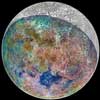
|
 |
OTHER HEADLINES Additional stories today
|
 |
Space station status update -- Astronaut Mike Fincke will spend some time this week continuing to troubleshoot U.S. spacesuit cooling system problems. New U.S. spacesuit cooling system pumps were among the spare parts delivered aboard the new Progress last weekend.

Air-to-space laser communications to be tested -- Northrop Grumman Corporation has been selected by the U.S. Air Force to design, build and demonstrate a prototype optical aperture system that will enable laser communications between aircraft and space-based platforms.
|
 |
|
Saturday:
August 21, 2004 | |
0001 GMT |
 |
Final engine test-fired for shuttle return to flight
Engineers at NASA's Stennis Space Center in Mississippi have successfully tested what's expected to be the last of three Space Shuttle Main Engines that will carry the next shuttle into orbit.
 FULL STORY FULL STORY
 |  |

|
 |

Additional coverage for subscribers:
 VIDEO:
SPACE SHUTTLE MAIN ENGINE IS TEST-FIRED QT VIDEO:
SPACE SHUTTLE MAIN ENGINE IS TEST-FIRED QT
 SUBSCRIBE NOW SUBSCRIBE NOW

|
Cooking on a comet
One of the ingenious instruments on board the European Space Agency's Rosetta comet-chasing spacecraft is designed to 'smell' the comet for different substances, analyzing samples that have been 'cooked' in a set of miniature ovens.
 FULL STORY FULL STORY
 |  |
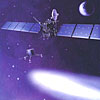
|
 |
|
Friday:
August 20, 2004 | |
0431 GMT |
 |
Delta 4-Heavy rocket to take maiden flight in Oct.
A new launch date has been selected for the delayed demonstration flight of Boeing's massive Delta 4-Heavy rocket that will carry a satellite simulator and two tiny nanosats.
 FULL STORY FULL STORY
 |  |

|
 |

Additional coverage for subscribers:
 VIDEO:
ANIMATION PROVIDES PREVIEW OF DELTA 4-HEAVY LAUNCH QT VIDEO:
ANIMATION PROVIDES PREVIEW OF DELTA 4-HEAVY LAUNCH QT
 SUBSCRIBE NOW SUBSCRIBE NOW

|
Latest color pictures from Cassini look like artwork
NASA has released three new stunning color pictures taken by the Cassini spacecraft exploring the planet Saturn. The images show the giant planet, its golden rings and several moons.
 FULL STORY FULL STORY
 |  |
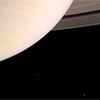
|
 |
Intelsat is critical link in Athens Olympics coverage
Intelsat, the only global satellite leader to provide coverage of every Olympic Games since 1968, confirmed Thursday that it pre-booked over 35,000 hours of programming for 50 channels for this year's Olympic Games in Athens, Greece. This represents one of the highest traffic events in the company's history, and equates to what would be almost four years of continual programming carried within a 20-day period.
 FULL STORY FULL STORY
 |  |

|
 |
|
Thursday:
August 19, 2004 | |
0201 GMT |
 |
Bedrock in Mars' Gusev Crater hints at watery past
Now that NASA's Mars Exploration Rover Spirit is finally examining bedrock in the "Columbia Hills," it is finding evidence that water thoroughly altered some rocks in Mars' Gusev Crater. On Opportunity, a tool for exposing the insides of rocks stopped working Sunday, but engineers are optimistic that the most likely diagnosis is a problem that can be fixed soon.
 FULL STORY FULL STORY
 MARS ROVER ARCHIVE MARS ROVER ARCHIVE
 |  |

|
 |

Additional coverage for subscribers:
 VIDEO:
SPIRIT FINDS NEW CLUES ABOUT PAST WATER QT VIDEO:
SPIRIT FINDS NEW CLUES ABOUT PAST WATER QT
 VIDEO:
NARRATED PRESENTATION OF SPIRIT PICTURE FROM HILL QT VIDEO:
NARRATED PRESENTATION OF SPIRIT PICTURE FROM HILL QT
 VIDEO:
OPPORTUNITY'S ROCK GRINDING TOOL IS STUCK QT VIDEO:
OPPORTUNITY'S ROCK GRINDING TOOL IS STUCK QT
 VIDEO:
LEAD SCIENTIST GIVES UPDATE ON OPPORTUNITY QT VIDEO:
LEAD SCIENTIST GIVES UPDATE ON OPPORTUNITY QT
 VIDEO:
WATCH WEDNESDAY'S BRIEFING IN ITS ENTIRETY QT VIDEO:
WATCH WEDNESDAY'S BRIEFING IN ITS ENTIRETY QT
 SUBSCRIBE NOW SUBSCRIBE NOW

|
International interplanetary networking from Mars
One of NASA's Mars rovers has sent pictures relayed by the European Space Agency's Mars Express orbiter for the first time, demonstrating that the orbiter could serve as a communications link if needed.
 FULL STORY FULL STORY
 |  |

|
 |
Desert air studied to understand climate
NASA, Naval Research Laboratory and Scripps Institution of Oceanography scientists have assembled in the Arabian Desert to study tiny airborne particles called aerosols and their effect on weather and climate. The scientists are collaborating with researchers from the United Arab Emirates Department of Water Resources Studies and 20 other U.S., European and South African research laboratories to decipher the complex processes controlling the area's climate.
 FULL STORY FULL STORY
 |  |

|
 |
|
Wednesday:
August 18, 2004 | |
0245 GMT |
 |
Discovery milestones set stage for Return To Flight
The pace of preparations for Return to Flight is picking up, with several key milestones in recent weeks marking important progress in readying the Space Shuttle Discovery for its next mission.
 FULL STORY FULL STORY
 |  |

|
 |
How old is the Milky Way?
The currently best estimate of the age of the Universe, as deduced from measurements of the Cosmic Microwave Background, is 13.7 billion years. New observations with the Very Large Telescope at Paranal Observatory indicate that the first generation of stars in the Milky Way galaxy formed soon after the end of the ~200 million-year long "Dark Ages" that succeeded the Big Bang.
 FULL STORY FULL STORY
 |  |

|
 |
TRMM spacecraft sees rain from hurricanes
Since rain and freshwater flooding are the number one causes of death from hurricanes in the United States over the last 30 years, better understanding of these storms is vital for insuring public safety. A recent study funded by NASA and the National Science Foundation offers insight into patterns of rainfall from tropical storms and hurricanes around the world.
 FULL STORY FULL STORY
 |  |
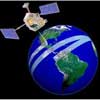
|
 |
|
Tuesday:
August 17, 2004 | |
0152 GMT |
 |
Out from the shadows: Two new Saturnian moons
With eyes sharper than any that have peered at Saturn before, the Cassini spacecraft has uncovered two moons, which may be the smallest bodies so far seen around the ringed planet.
 FULL STORY FULL STORY
 CASSINI ARCHIVE CASSINI ARCHIVE
 |  |
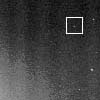
|
 |
Boeing to design Mars parachute technology
Boeing has won a $1.5 million, three-year NASA Mars Technology Development contract to develop guidance parachute technology for future Mars missions. NASA's proposed robotic Mars missions, using this technology, would be capable of landing on the surface of the planet within 2.5 miles of the target area.
 FULL STORY FULL STORY
 |  |

|
 |
|
Monday:
August 16, 2004 | |
0326 GMT |
 |
Disk shows signs of planets
The sharpest image ever taken of a dust disk around another star has revealed structures in the disk which are signs of unseen planets. At a distance of only 33 light years, this is the nearest star possessing a visible disk of dust, which are believed to be the birthplaces of planets.
 FULL STORY FULL STORY
 |  |

|
 |



